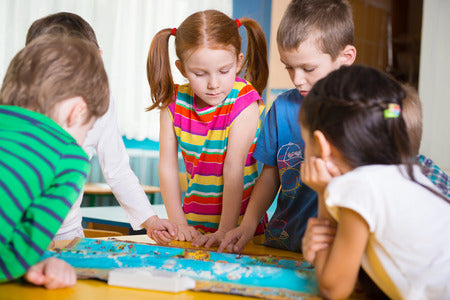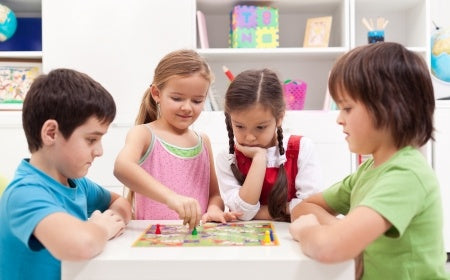Why use games in the classroom?
 I loved playing games as a kid. Candy Land, Battleship, Scrabble, and Uno were among my favorites. If asked as a child, I wouldn’t have described these games as “educational.” They were fun, an escape from learning, the antithesis of the facts and figures and numbers you memorize in school. Yet, if we take a closer look at many children’s games, we’ll find that they’re actually quite complex learning environments that develop a variety of important problem solving, social, and emotional skills. These are the same skills we try to impart to our students every day!
I loved playing games as a kid. Candy Land, Battleship, Scrabble, and Uno were among my favorites. If asked as a child, I wouldn’t have described these games as “educational.” They were fun, an escape from learning, the antithesis of the facts and figures and numbers you memorize in school. Yet, if we take a closer look at many children’s games, we’ll find that they’re actually quite complex learning environments that develop a variety of important problem solving, social, and emotional skills. These are the same skills we try to impart to our students every day!
We’ll spend the next few weeks talking about using games to improve student learning. This week we’ll take a closer look at why games enhance student achievement and motivation. Next, we’ll describe how to use games to develop math, spatial, and reading skills. Finally, we’ll hone in on the advantages of digital games such as apps, computer games, and video games.
 Board games, dice games, and card games should be a staple of your classroom because of the many benefits they offer. Among those benefits include:
Board games, dice games, and card games should be a staple of your classroom because of the many benefits they offer. Among those benefits include: - enhanced problem-solving skills
- a greater motivation to learn
- improved social and emotional development
Enhancing problem-solving
While there is a place for memorizing information, learning shouldn’t be merely rote memorization. True learning is complex, multi-faceted, and doesn’t typically result in one correct answer or body of knowledge. Games reflect the heart of learning by allowing children to work on rich, meaningful problems that can have many different solutions. They encourage creativity and spark innovation as children try new ideas and refine their strategy along the way.
We improve at any task through practice, and games are great contexts for practice. As the child tries to move from one level to the next or plays a favorite game, again and again, they are practicing and improving upon the skills embedded in the game.
Motivating students
It shouldn’t come as a surprise that children learn better when they’re excited to learn. Learning becomes more exciting when it has a purposeful goal embedded within a meaningful context. Games provide this meaningful context by allowing players to explore concepts and try different ideas in a context that simulates the real world. As children try different solutions, solve problems, and try to outwit their opponent, they are challenged. This challenge often creates an engaging environment that promotes further game play and therefore further learning.
Games also allow for immediate feedback, which motivates the learner to continue searching for a solution. Feedback tells the player whether they are on the right track or how effective their strategy is. This feedback allows the student to reflect on their solution and modify it immediately, helping them to disregard poor solutions and refine good solutions.
Promoting social and emotional learning
Most of the games we play are social in nature. We play with others by working together to solve a problem, strategizing against an opponent, or discussing games as part of a community that develops around popular games. Through playing games, children learn essential skills: teamwork, communication, and negotiation. Not only do they practice their problem-solving skills, but they learn from peers that might have more advanced or varied critical thinking and analytical skills.
In addition to the benefits described above, games also make learning fun! They take away some of the pressure of learning and create a playful environment, which encourages children to take risks and try new strategies without the fear of being wrong.
Do you use games in your classroom? Tell us about it in the comments below!

